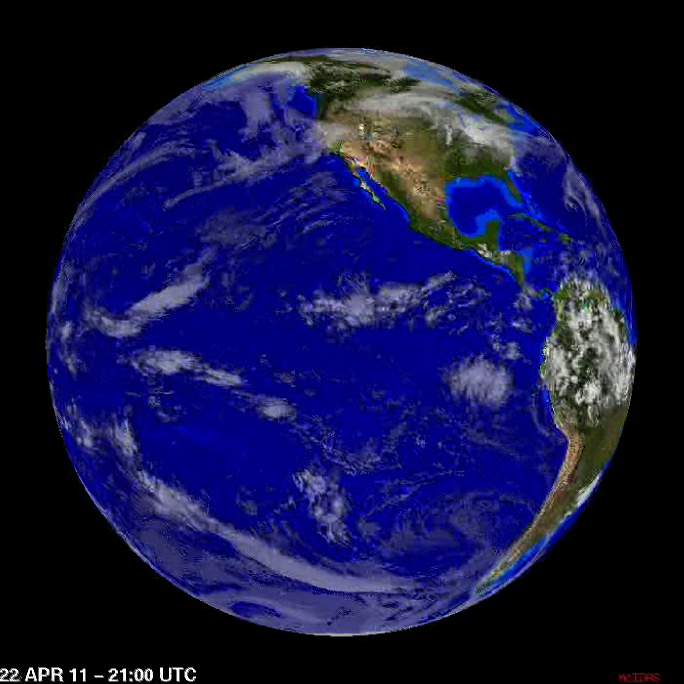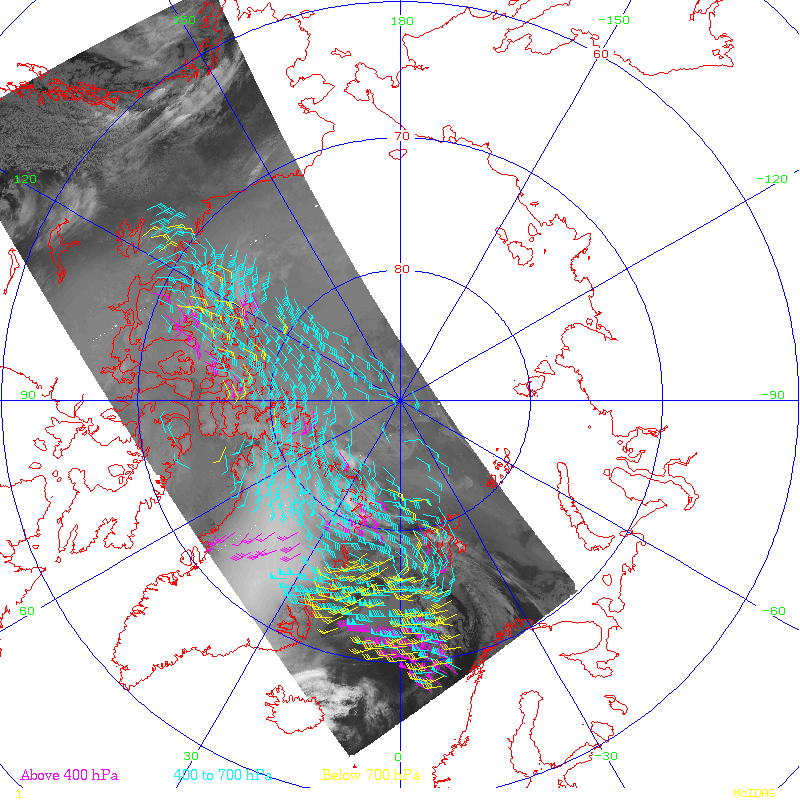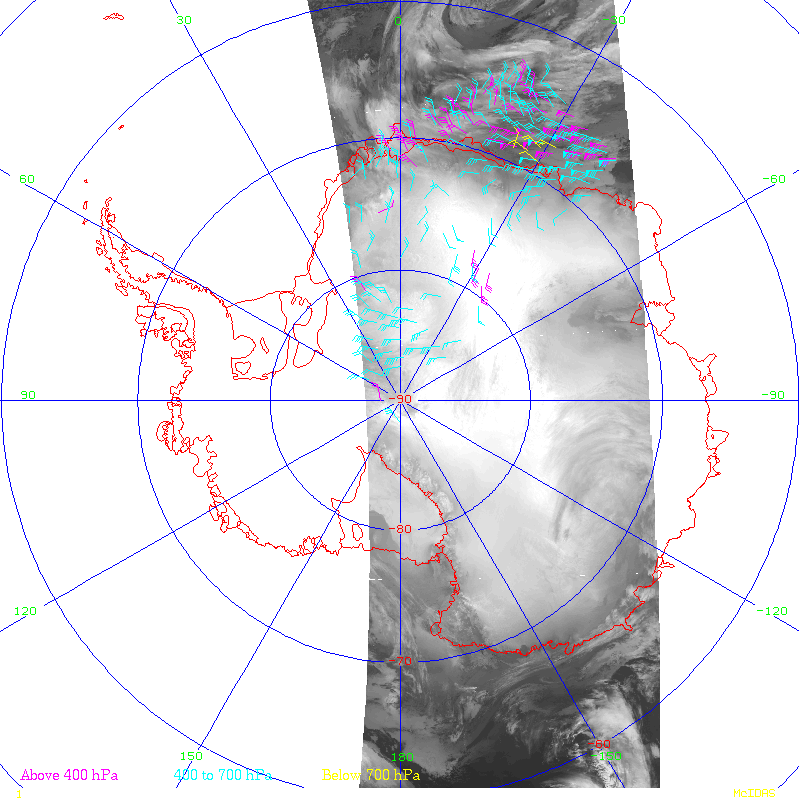Earth Day 2011
The “spinning globe” satellite image montage (above; click image to play animation) showed the cloud formations around the planet on Earth Day (22 April 2011). This product is created by combining data from 5 of the currently operational geostationary orbiting meteorological satellites (GOES-East at 75º West longitude, GOES-West at 135º West longitude, Meteosat at 0º longitude, Meteosat at 63º East longitude, and MTSAT at 145º East longitude), polar orbiting satellites, and a topographic background map of the Earth. The spinning globe product is created every 3 hours, and is available for either the latest time period or an animation covering the last 3 weeks.
Polar-orbiting satellites such as the NASA Terra and Aqua platforms also provide us with valuable information over the polar regions of the Earth (which are not sampled well by geostationary satellites, due to the very large viewing angles). Cloud-tracked winds (or “atmospheric motion vectors”) can be calculated by comparing the location of features on successive images — examples of Terra and Aqua MODIS winds from 22 April 2011 over the Arctic region (above) and the Antarctic region (below) provide valuable input into numerical weather prediction models.
These are just a few examples of the diverse array of real-time satellite data and products that are available from the Space Science and Engineering Center at the University of Wisconsin – Madison every day.




